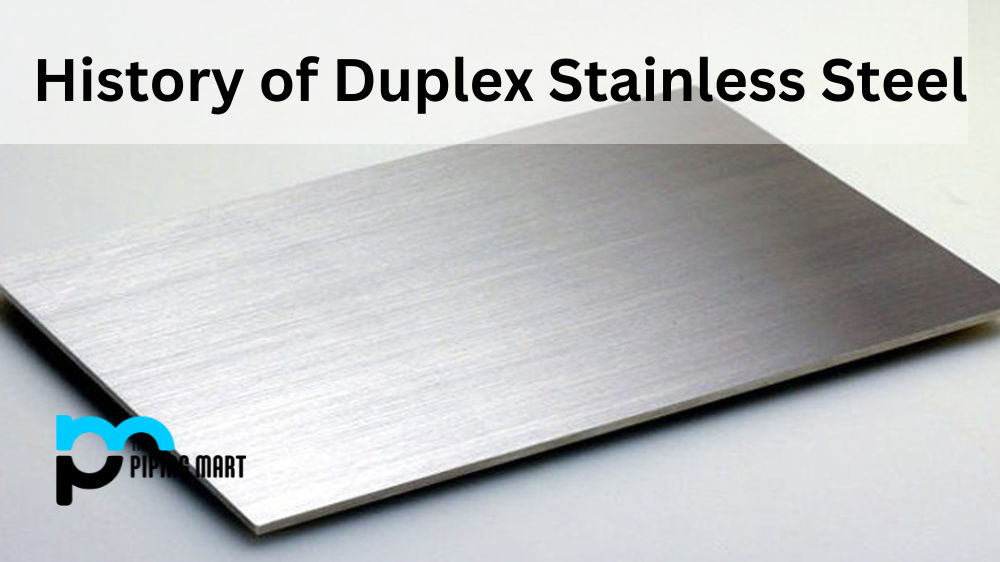In the early 1900s, the very first stainless steels were pure austenite, ferrite, or martensite. The first duplex grades with a combination of ferritic and austenitic phases were developed in 1930 by the Avesta Ironworks in Sweden, which later became Outokumpu. The mill began selling the first two duplex grades to customers who required intergranular corrosion reduction, which can occur with ferritic stainless steel.
In those early days, duplex grades were used to create castings, bars, and plates for the pulp and paper industry and elevated temperature applications thanks to their good corrosion resistance and castability. By 1932, they accounted for 6.5% of the total global stainless steel market of 5,500 tonnes.
What is Duplex Stainless Steel?
Duplex stainless steel is a type of stainless steel that is composed of grains of two types of stainless steel material, austenitic and ferritic. The word “duplex” refers to the two-phase microstructure of ferritic and austenitic steel grains. The ferritic and austenitic stainless steel grades have approximately equal proportions (i.e., 50% each) in duplex stainless steel.
Duplex stainless steels are extremely corrosion resistant due to their microstructure which contains both austenite and ferrite phases. This makes them ideal for use in environments where both high strength and high corrosion resistance are required, such as in marine applications, chemical processing plants, and in oil and gas production.
Benefits of Duplex Stainless Steel
Duplex stainless steels are becoming increasingly popular due to their superior corrosion resistance and mechanical properties. Duplex grades have greater strength and resistance to pitting, stress cracking, and crevice corrosion than austenitic stainless steels.
There are many benefits of using duplex stainless steel, including the following:
- Increased strength and durability
- Better resistance to corrosion and pitting
- Lower costs
- Eco-friendly production process
- Increased versatility
If you’re looking for a high-quality, durable, and cost-effective material, then duplex stainless steel is an excellent option.
Applications of Duplex Stainless Steel
Duplex Stainless Steel is used in a wide range of industries, including:
- Chemical processing
- Oil and gas
- Desalination
- Pulp and paper
- Food and beverage
- Pharmaceuticals
- Architecture and construction
- Marine environments
Composition of Duplex Stainless Steel
Duplex stainless steels are made up of two different phases: austenite and ferrite. Duplex stainless steels vary in composition, but they typically contain around 22% chromium, 3% molybdenum, and 5-6% nickel. They also contain trace amounts of manganese, silicon, and nitrogen. The two phases are mixed in varying proportions depending on the grade of duplex stainless steel. The austenite phase is distinguished by its high chromium and nickel content, which confers superior corrosion resistance. The ferrite phase is responsible for the steel’s high strength and toughness.
Properties of Duplex stainless steel
Duplex stainless steels have a higher strength and hardness than austenitic stainless steels. They also have better corrosion resistance in chloride-containing environments. Additionally, they are less susceptible to stress corrosion cracking and pitting corrosion than austenitic stainless steels.
Grades of Duplex stainless steel
There are a variety of grades of Duplex stainless steel, each with different properties depending on their composition. Some common grades include 2205 (UNS S31803/S32205), 2507 (UNS S32750), and 4501 (UNS S32760).

Pipingmart is a B2B portal that specializes in metal, industrial and piping items. Additionally, we share the latest information and information about materials, products and various types of grades to assist businesses that are involved in this business.




